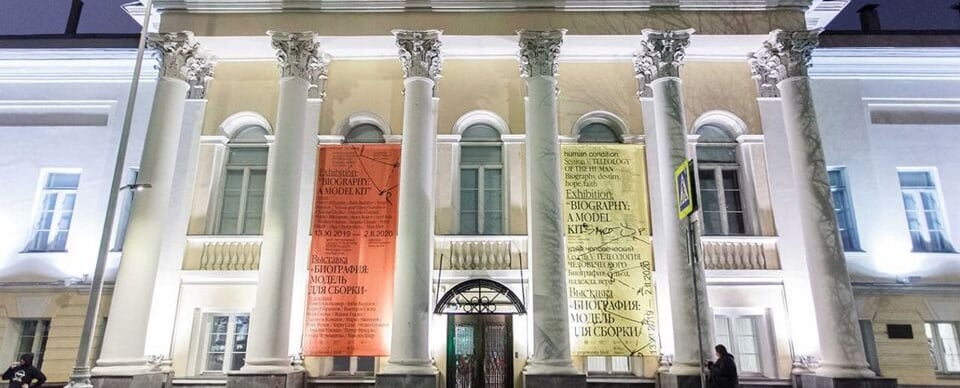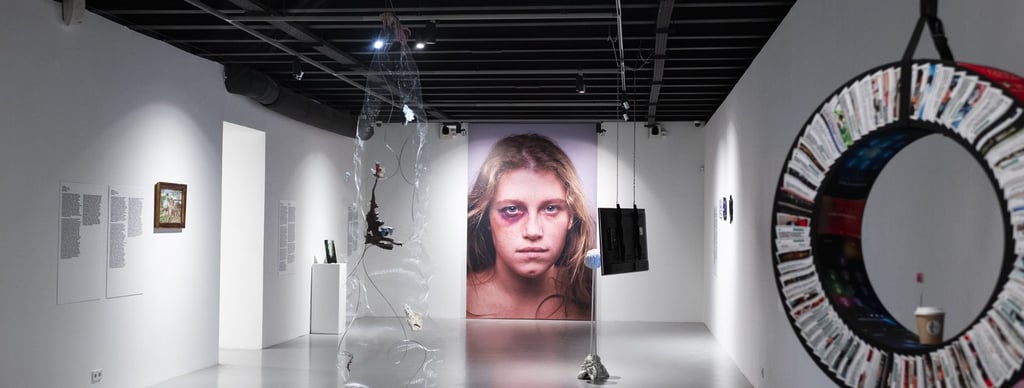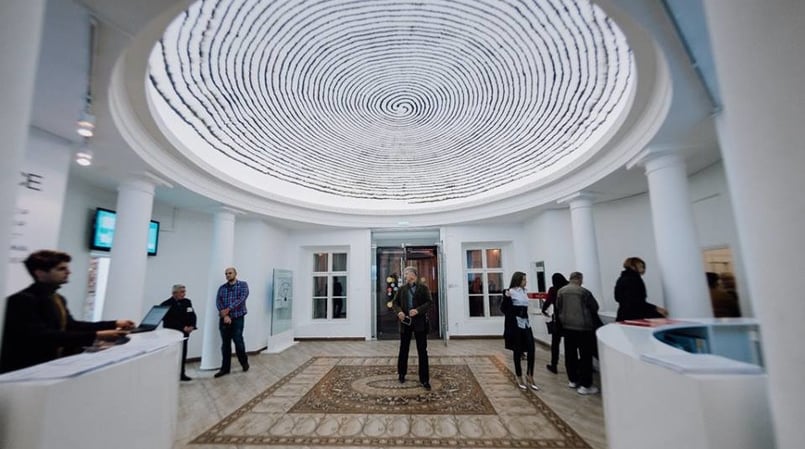Moscow Museum of Modern Art (MMOMA): A Bold Lens into Russia’s Creative Soul
In the heart of the Russian capital, the Moscow Museum of Modern Art pulses with the electric energy of the new, the experimental, and the fearless.


A Vanguard Vision
The Moscow Museum of Modern Art, or MMOMA, is more than just a showcase of paintings or sculptures — it is a living organism in constant transformation. Founded in 1999, it became the first state museum in Russia devoted exclusively to 20th and 21st-century art. From its inception, MMOMA has positioned itself not as a passive institution preserving a fixed canon, but as an active player in the artistic life of the city, a provocateur, a forum, and a platform.
The museum’s creation was spearheaded by Zurab Tsereteli, a monumental sculptor and the president of the Russian Academy of Arts. He donated a significant portion of his personal collection and helped transform a historic mansion on Petrovka Street into a dynamic space where modern and contemporary art could breathe freely — and boldly.
Since then, MMOMA has grown into a network of venues across Moscow, each with its own character and curatorial voice. Together, these spaces form a map of modern Russian creativity, dotted with international intersections.
A Living Archive of Russian Modernism
To understand the scope of MMOMA is to understand the turbulent, glorious, and often censored history of Russian modern art. While many of Russia’s early avant-garde giants — Kandinsky, Malevich, Rodchenko, Goncharova — found their way into Western collections, MMOMA makes a powerful stand by focusing on what remained, what was hidden, and what was reborn on Russian soil.
Its core collection includes over 10,000 works by artists who, for much of the Soviet era, were sidelined or suppressed: painters, graphic artists, sculptors, and conceptualists who dared to push boundaries in times when deviation from Socialist Realism meant exile, obscurity, or worse.
Here, the museum becomes a space of historical redress. The once “unofficial” is now exalted. The marginalized is now at the center.
Visitors can trace the path of Russian modernism from early abstract experimentation to the severe style, from the brave conceptualism of the Moscow underground scene in the 1970s to the post-Soviet explosion of identity politics, performance, and digital media.
An Eclectic and Expanding Universe
What makes MMOMA unique is not just its collection, but its spirit of eclecticism. It doesn’t seek to impose a single narrative or aesthetic. Rather, it thrives on dialogue and contradiction.
In one gallery, a somber monochrome portrait echoes the minimalism of the Cold War years; next door, a riot of neon and sound breaks across the room in a multimedia installation. Upstairs, a sculpture made of Soviet-era toys asks questions about nostalgia and memory, while in the courtyard, a rotating series of street art interventions blurs the line between museum and city.
MMOMA is not static. It is constantly curating the now — exhibiting emerging artists from across Russia and abroad, hosting biennales, festivals, artist talks, and interdisciplinary happenings.
The museum also operates as a publishing house, a research center, and an educational hub. It nurtures a generation of curators, critics, and cultural producers who are redefining what Russian contemporary art can be, and how it can engage with the world.
MMOMA’s Venues: A Citywide Dialogue
MMOMA isn’t a single building — it is a distributed experience, a cultural constellation. Each location has its own history, its own atmosphere, its own role in Moscow’s urban and artistic fabric.
Petrovka 25 – The Heart
The original and main building, housed in an elegant 18th-century mansion once owned by merchant Gubin, stands at 25 Petrovka Street. Here, the past and future co-exist in elegant tension. The curved staircase, the molded ceilings — all reminders of imperial Moscow — now cradle daring contemporary works. This is the spiritual heart of MMOMA, where permanent and flagship exhibitions are shown.
Gogolevsky Boulevard 10 – Dialogue and Experimentation
Located just across from the Cathedral of Christ the Savior, this venue offers thematic and often provocative exhibitions. With a focus on curatorial experiments, Gogolevsky Boulevard serves as a think tank for artistic ideas, hosting retrospectives, solo projects, and international collaborations.
Tverskoy Boulevard 9 – The Avant-Garde Forum
In this smaller but active space, MMOMA stages temporary exhibitions with a spotlight on young artists, fresh formats, and cross-genre explorations. It is a favorite among students, critics, and the curious.
Ermolaevsky Lane and Zurab Gallery – Monumental and Personal
In Ermolaevsky Lane, the museum occupies a historic house with a calm, almost meditative atmosphere — perfect for quieter, reflective works. Meanwhile, the Zurab Tsereteli Art Gallery, not far away, explodes with his massive sculptures and vibrant murals, reflecting the founder’s eclectic personality.
Together, these sites form a mosaic of voices, allowing visitors to experience not only multiple artists but multiple versions of Moscow.
A Museum for the Future
MMOMA is not interested in merely reflecting trends — it is interested in shaping them. It offers a radically inclusive vision of art: one that embraces painting and sculpture but also installation, video, sound, performance, digital environments, activist interventions, and even memes.
The museum understands that art today is not confined to canvas — it spills onto the street, into the internet, into the body. Its curators are as likely to collaborate with philosophers, musicians, and engineers as with painters.
MMOMA’s educational outreach is equally ambitious. It hosts workshops, lectures, masterclasses, and programs for children, teens, and professional artists alike. Its mission is not only to show art but to build a community of creators and critical thinkers.
Practical Information
Main Location
MMOMA Central Building
25 Petrovka Street, Moscow, Russia
Other Venues
10 Gogolevsky Boulevard
9 Tverskoy Boulevard
17 Ermolaevsky Lane
Zurab Tsereteli Art Gallery, 19 Prechistenka Street
Opening Hours
Tuesday — Sunday: 12:00 — 21:00
Closed on Mondays
Tickets
Available online or at the museum. Combined tickets for multiple venues may be available. Free admission is offered for certain categories and during special public events.
Public Transport
Nearest metro stations to the main building:
Chekhovskaya, Tverskaya, Pushkinskaya
Accessibility
All main MMOMA venues are wheelchair accessible. Special services and programs for visitors with disabilities are available.
Museum Services
Audio guides
Guided tours in Russian, English, and other languages
Bookshop and design store
Café at selected venues
Lecture and workshop spaces
Events and Programs
Thematic festivals (video art, performance, sound art)
Educational programs for all ages
Artist-in-residence projects
International partnerships and touring exhibitions
For current exhibitions, tickets, events, and more, visit the official site:
https://www.mmoma.ru


A Space of Freedom
One of the unspoken virtues of MMOMA is its role as a space of freedom in a society where such spaces can be fragile. Modern and contemporary art in Russia has always navigated a delicate dance with official ideology, censorship, and shifting political winds.
By existing as a state museum yet maintaining an open, exploratory ethos, MMOMA offers a platform for voices that question, challenge, and expand the boundaries of expression. It is a rare environment where difficult histories can be confronted, where marginalized identities can find visibility, and where the future of Russian cultural discourse is actively shaped.
The museum’s collaborations with global institutions — from the Centre Pompidou to the Tate, from the Guggenheim to the Garage Museum of Contemporary Art — further ensure that MMOMA remains porous to international currents, even as it remains grounded in Moscow’s unique artistic soil.
Treasures and Moments
Though contemporary art thrives on the ephemeral and the experimental, MMOMA’s permanent collection holds its own share of seminal treasures:
Russian Avant-Garde: Works by Kandinsky, Malevich, Lissitzky, and their contemporaries chart the heroic early years of abstract and constructivist art.
Nonconformist Art of the Soviet Period: A deep collection of paintings, graphics, and objects from the underground art scenes of the 1960s–1980s, offering a rare window into dissent and alternative visions under Soviet rule.
Conceptual Art: Key works by figures such as Ilya Kabakov, Andrei Monastyrsky, and Collective Actions, documenting the rich conceptual tradition of postwar Russia.
Contemporary Installations: Ever-evolving, the museum stages large-scale site-specific works by Russian and international artists that transform its galleries into immersive environments.
Zurab Tsereteli’s Personal Collection: While sometimes controversial, the founder’s collection offers an eclectic, deeply personal take on the art of the 20th century.
Each visit to MMOMA is different — the museum thrives on the temporal. To walk its halls is to witness a conversation between generations, between east and west, between past traumas and future dreams.
The MMOMA Experience
Visiting MMOMA is a dynamic, often unpredictable experience. Unlike the solemn reverence of Moscow’s older institutions, MMOMA encourages interaction, curiosity, and questioning.
You might find yourself in a room with flickering video projections that challenge your sense of time. You might hear sound art echoing through an 18th-century stairwell. You might encounter a performance in the courtyard or a VR installation that transports you beyond physical space.
The museum’s public programs further enrich this experience — artist talks, performances, guided discussions, and educational labs invite deeper engagement.




